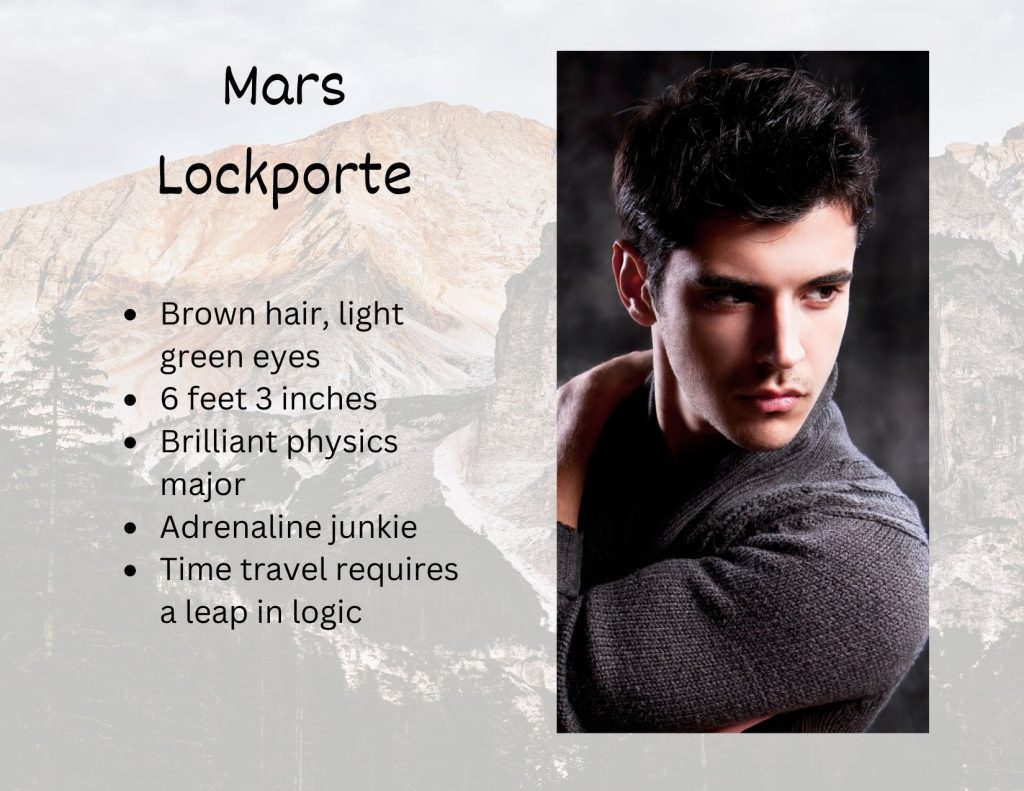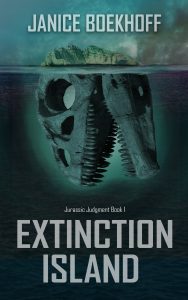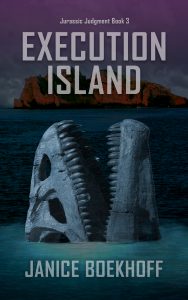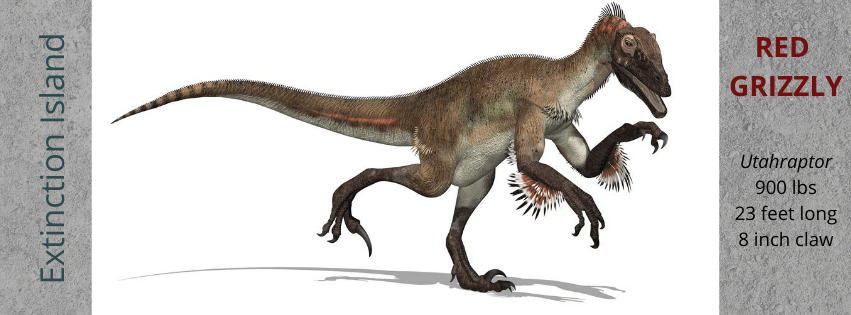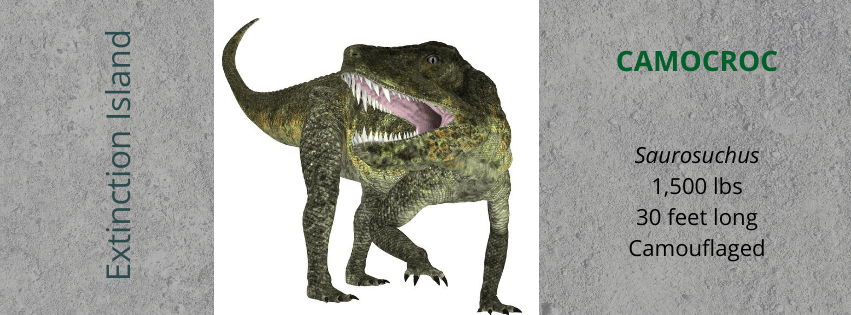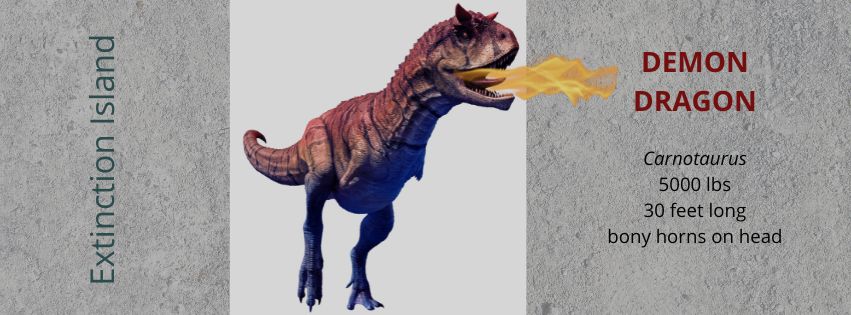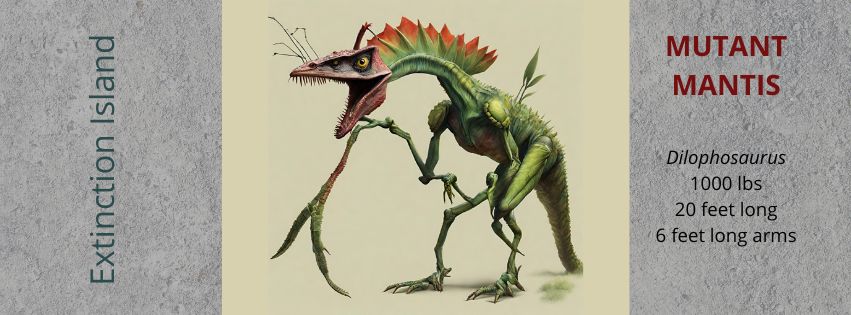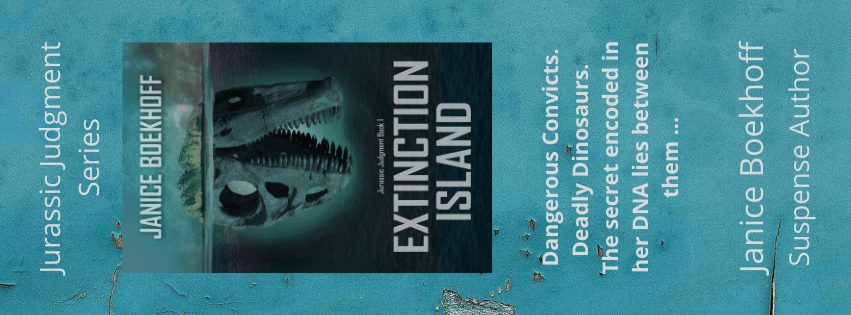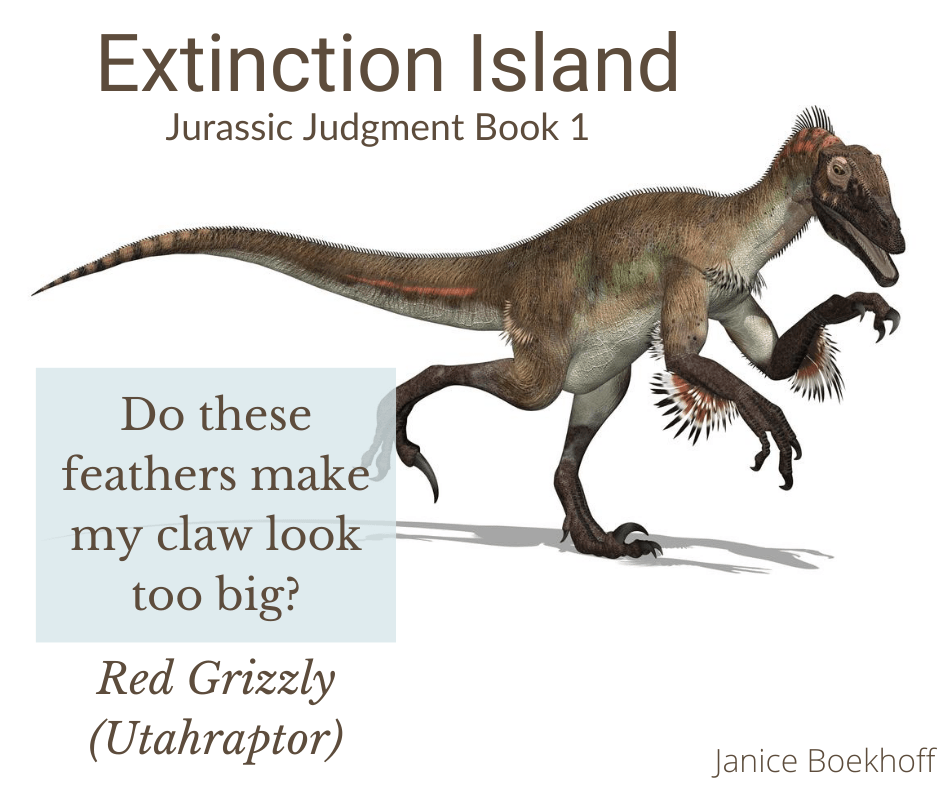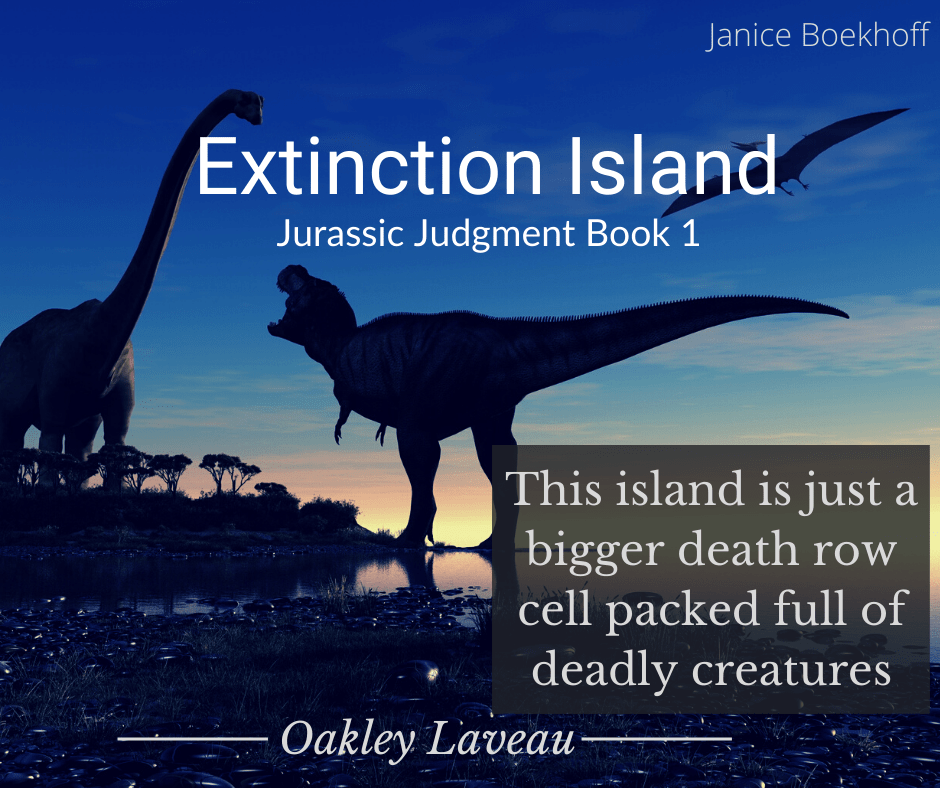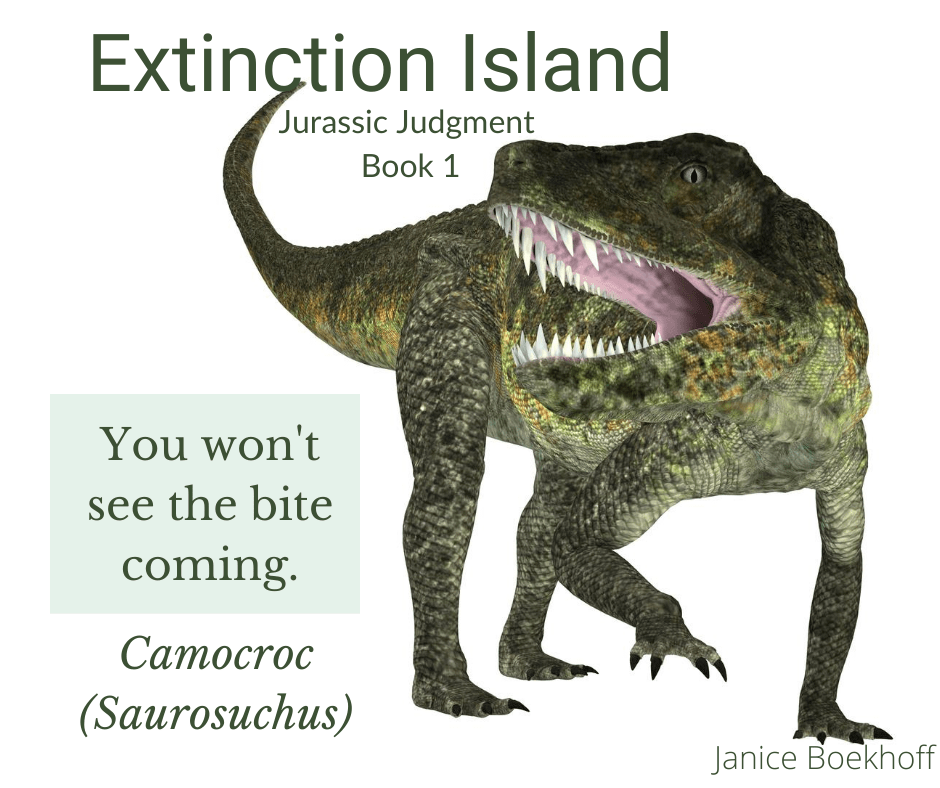Extras
Here you’ll find discussion questions, fun facts, bookmarks, postcards, and more.
Happy exploring!
Jurassic Judgment Series
Ruby’s Flight: A Jurassic Judgment Short
This is a personalized short scene written for the winner of the Execution Island release day giveaway (PDF file). Hope you enjoy this dinosaur chase through the jungle!
Extinction Island Discussion Questions (pdf)
FAQs–Frequently Asked Author Questions (pdf)
Dinosaur Fun Facts
Dinosaurs were massive and tiny … fearsome and motherly … predator and prey. They existed in too many different varieties to name them all here, but this list covers some of their amazing qualities, at least the ones that scientists know about. The truth is these creatures could have had much more astounding abilities than we can imagine.
- Before 1842, no one knew the term dinosaur. It was coined by Richard Owen, a British paleontologist, from the Greek words dienos (terrible) and sauros (lizard).
- How many types of dinosaurs existed? Over 700 species have been named, but there could have been much more.

Apatosaurus
- How long did the big dinosaurs like Apatosaurus live? At one time, scientists speculated they might have lived 300 years, but recent studies suggest it was more like 70-80 years, similar to modern elephants.
- Why were some dinosaur skulls holey? Scientists think dinosaurs like Tyrannosaurus rex could have used these open areas in their skull to cool or heat their blood as needed. Perhaps rex wasn’t as hotheaded as we’ve always thought.
- First dinosaur discovery? The first species of dinosaur was named before the word dinosaur was coined. In 1824, the first geology professor at Oxford, William Buckland, named the bones of what he understood to be an ancient lizard, Megalosaurus (great lizard). Although few bones of this beast were found, we still use this name today, so he is credited with naming the first dinosaur. However, a man named Robert Plot is credited with discovering the first dinosaur bone in 1677. At the time, Plot mistakenly thought it belonged to a giant human.
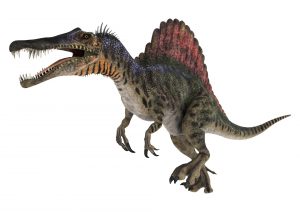
Spinosaurus
- Largest carnivorous dinosaur: Spinosaurus at up to 59 feet (18 m) long and weighing in at almost 9 tons, it was bigger than the previous record holder, Giganotasaurus.
- Longest dinosaur? Seismosaurus at 111 feet (34 m) has claimed this title—about 3 school buses in length—but in recent years a new group of sauropods, called Titanosaurs has reached for the goal of longest dinosaur. Some of the Titanosaurs may have been up to 120 feet (37 m) long, but the specimens aren’t complete enough to know for sure.
- Heaviest dinosaur? Argentinosaurus at 98 feet (30 m) long and weighing between 60-100 tons, as much as seven African elephants (estimates vary because the fossil bones aren’t complete).
- Tallest dinosaur? Sauroposeidon at 55 feet (17 m) tall. It was almost as tall as George Washington’s head on Mt. Rushmore (60 feet). Although Sauroposeidon fossils are incomplete, estimates of its height beat out the previous record holder, Brachiosaurus, which stands at 39 feet (12 m) tall.
- Longest carnivorous teeth? Tyrannosaurus rex had banana shaped teeth that were 12 inches long. Those teeth delivered the strongest bite of any land animal that has ever lived.
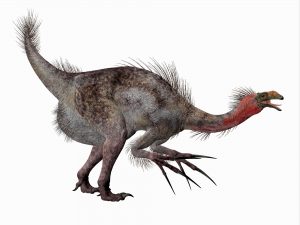
Therizinosaurus
- Longest Claw? Therizinosaurus (scythe lizard) whose claws were up to 3 feet (1 m) long.
- Dumbest dinosaur? Stegosaurus had a brain that was only 3 cm long and weighed 75 grams (the size of a walnut).
- Longest dinosaur name? Micropachycephalosaurus (tiny thick-headed lizard).
- Scientists estimate some of the largest sauropod dinosaurs may have required 100,000 calories a day to sustain their bulk. Certainly, they would have had to eat hundreds, if not thousands, of pounds of food per day. Talk about being incessantly hungry.
- Dinosaurs often swallowed large rocks (called gastroliths) that stayed in their stomach to help them digest food.
- One of the first prolific fossil hunters was actually a woman. Mary Anning was born in 1799 on the southern coast of England. When her father died and left the family in debt, she began fossil hunting for survival. One of her first sales was an Ichthyosaurus (fish lizard) found by her brother and excavated by her. Even though she had little formal education, she worked closely throughout her life with professional fossil hunters of the time, such as William Buckland and Richard Owen (who would go on to coin the term dinosaur).

Parasaurolophus
- Parasaurolophus had a crest that reached up to 6 feet (1.8 m) long, the biggest crest of all the dinosaurs. It could have been used for mating, defense, or communication through sound (or all of this).
- Velociraptor (speedy thief) was named in 1924 by Henry Fairfield Osborn to describe its speed and carnivorous diet, but this wasn’t the first name for the dinosaur. Earlier, Osborn had described the specimen in a popular magazine, giving it the name Ovoraptor (meaning egg thief). He changed the name to Velociraptor in his scientific paper, so that name became the accepted one. Although Velociraptors are usually depicted as naked in the movies, scientists have discovered quill knobs on their bones, indicating they likely had feathers.
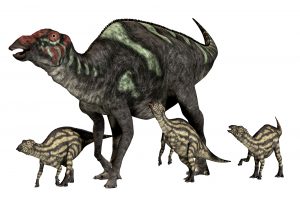
Maiasaura was a duck-billed herbivorous Hadrosaur
- The toothiest dinosaur was the Hadrosaurus. Its mouth contained over 1,000 teeth, and it continually grew new ones.
- The Bone Wars—a paleontological feud that lasted almost 30 years—led Othniel Marsh (Yale University) and Edward Drinker Cope to find and name hundreds of new dinosaur species in America. These former friends ended up losing their reputations and most of their money before their deaths in the late 1890s.
- The official Washington DC fossil is the “Capitalsaurus.” You’ll notice the name in quotes (not italics) because it’s not officially a genus designation for the dinosaur, which is an unidentified, large theropod (meat-eating dinosaur). The popular name was used by paleontologist Peter Kranz in 1990 in a newspaper article, and it stuck. Bone fragments from this dinosaur were found while digging a sewer near First and F Streets SE. Since the original dig site has been covered over and the specimens are so few, this dinosaur nay never be identified.
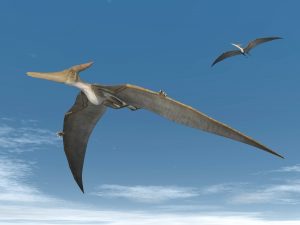
Quetzalcoatlus
- Biggest flying reptile was Quetzalcoatlus, which had a wingspan of up to 33 feet (10m).
- Brontosaurus may be back. The genus Brontosaurus was stricken from the scientific literature because the specimens were reclassified as Apatosaurus skeletons. For a hundred years, the Brontosaurus’ name was dead. But in 2015, a new study showed the specimens had enough differences to bring the Brontosaurus genus back. However, some scientists still disagree. Whichever name the dinosaur holds, it was an awe-inspiring beast at 70 feet long (21 m) and weighing around 30 tons.
- A newborn human baby has a bigger brain than most adult dinosaurs.
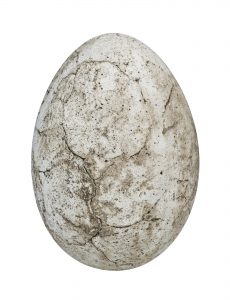
Dinosaur Egg
- The dinosaur eggs of even the largest dinosaurs were no bigger than the size of a basketball (19 inches long). This is probably because the bigger the egg, the thicker the shell. If the shell is too thick, then the baby dino wouldn’t be able to break through.
- Dinosaurs often eat rocks to help grind up their food (called gastroliths). In fact, some scientists theorize that a gastrolith could have been the cause of death for a 100-ton Seismosaurus (the most complete skeleton of a Seismosaurus that has ever been found). It’s possible the reptile may have choked to death while trying to swallow the large rock.
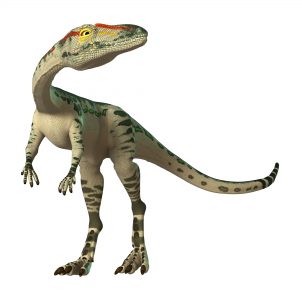
Coelophysis
- The New Mexico state fossil is the Coelophysis—the same animal that is Oakley’s pet (Cody) on Extinction Island. It was first found in New Mexico in 1881 and was named as the state fossil a hundred years later, in 1981. The animal weighed about 50 pounds and was as big as a medium-sized dog.
Note: This information was compiled from online resources: The Dinosaur Museum, American Museum of Natural History, Live Science, BBC, National Geographic, BBC Science Focus Magazine, Discovery Channel, History Channel, Science Daily, pbs.org, nps.gov, Scientific American, and Columbia University.
Bookmarks
Red Grizzly Front
Camocroc Front
Demon Dragon Front
Mutant Mantis Front
Bookmark Back
Postcard
Utahraptor Postcard Downloadable (pdf)
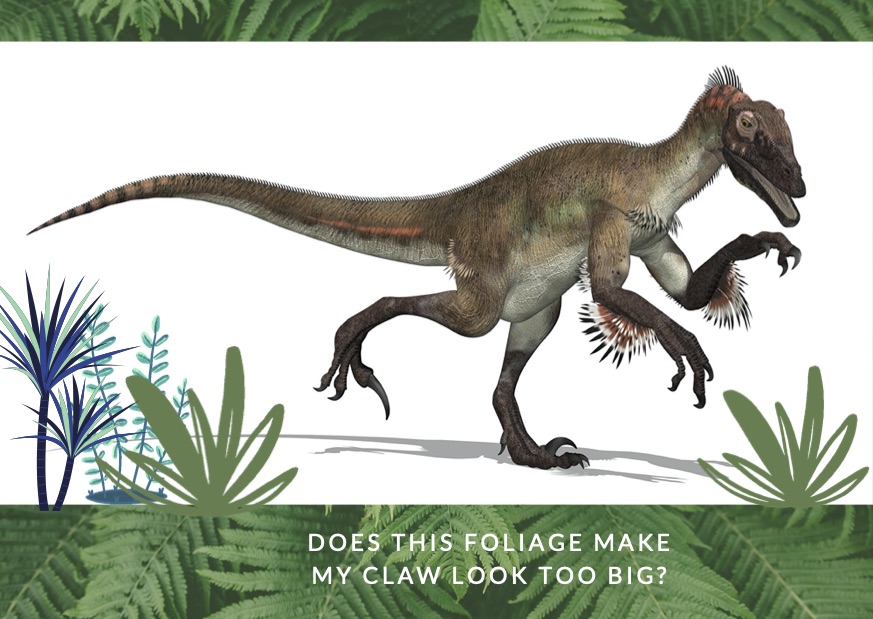

Sharable Facebook Posts
Note: For more extras like character dossiers, more postcards, and fun facts about the series, see the secret Jurassic Judgment Junkie page accessible only from the back of any Jurassic Judgment book (both print and e-books).
Christian Romantic Suspense
Earth Hunters Series
Crevice
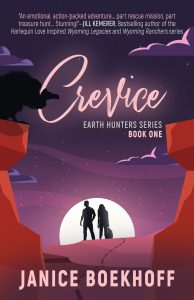
Crevice Character Descriptions
Created
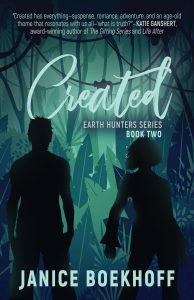
Cascade





